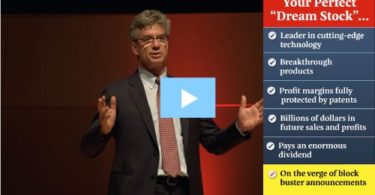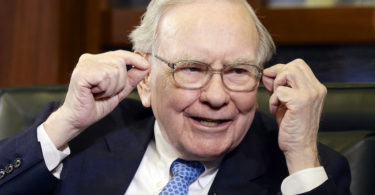Company Overview & Recent Developments
Savara Inc. (NASDAQ: SVRA) is a clinical-stage biopharmaceutical company focused on rare respiratory diseases, most notably developing Molbreevi (molgramostim) for autoimmune pulmonary alveolar proteinosis (aPAP) ([1]). The company completed a Biologics License Application (BLA) submission to the U.S. FDA for Molbreevi in March 2025, even requesting priority review with hopes for approval by late 2025 ([1]) ([1]). However, on May 27, 2025, Savara announced it received a Refusal to File (RTF) letter from the FDA, meaning the agency declined to review the BLA as submitted due to insufficient Chemistry, Manufacturing, and Controls (CMC) data ([2]). Importantly, the FDA raised no safety concerns or need for new efficacy trials – the issue was purely CMC-related ([2]). Savara’s CEO stated the required CMC data were already being generated and expressed confidence in addressing the FDA’s requests, guiding that the BLA would be resubmitted by Q4 2025 ([2]). This regulatory setback sent Savara’s stock plunging over 30% to around $1.94 per share in late May ([3]), though shares have since recovered as the company aligned with FDA on a remediation plan and continues to target eventual approval.
Dividend Policy & Shareholder Yield
Savara is not a dividend-paying company. As a pre-revenue biotech with ongoing net losses, it has never paid any cash dividends and is unlikely to initiate a dividend in the foreseeable future ([4]). Traditional REIT metrics like Funds From Operations (FFO) or Adjusted FFO are not applicable here, since Savara has no recurring operating cash flows or profits – its value hinges on R&D milestones rather than current income. Shareholders’ return thus far has come purely from stock price appreciation (or depreciation); for instance, SVRA shares are up roughly 34% year-to-date in 2025 after a volatile ride ([5]), reflecting investor sentiment around Molbreevi’s prospects rather than any direct yield. The company has also not engaged in share buybacks, instead conserving cash for development. In sum, shareholder yield is effectively zero, and investors in SVRA are betting on capital gains tied to drug approval rather than dividends ([4]).
Leverage and Debt Maturities
Savara’s balance sheet carries modest leverage thanks to a recent debt financing. In March 2025, the company entered a non-dilutive loan agreement with Hercules Capital for up to $200 million, which immediately provided $30 million used to refinance prior debt ([6]) ([6]). The remaining $170 million is structured in two tranches: $100 million becomes available only upon FDA approval of Molbreevi (and other milestones), and a final $70 million is at Hercules’ discretion ([6]). The loan carries a five-year maturity and a 36-month interest-only period, extendable to 60 months (i.e. full term) if Molbreevi wins FDA approval, meaning principal repayment can be largely deferred until 2030 ([7]). Notably, this debt came with no warrant coverage, underscoring management’s emphasis on non-dilutive financing ([7]). As of Q1 2025, Savara reported ~$172.5 million in cash against ~$29.5 million in debt ([1]), and by mid-2025 cash stood at ~$146 million after funding ongoing R&D ([8]). With a debt-to-equity ratio under 0.3x, leverage is low and primarily long-term. The Hercules loan’s interest rate floats at prime + 1.45% (≈8.95% as of mid-2025) ([9]). There are typical covenants, including a requirement that starting April 2026 Savara maintain cash equal to 50% of the outstanding loan in a controlled account (dropping to 35% post-approval) ([9]). Overall, no major principal repayments are due in the next few years, giving Savara breathing room to achieve approval and commercialization before the bulk of the debt matures.
Liquidity, Coverage & Cash Runway
Despite operating losses, Savara’s liquidity position is strong relative to its short-term needs. The company’s cash burn was about $27 million in Q1 2025 alone, reflecting heavy R&D spending ([10]) ([10]), and similar levels continued into Q2. However, with $146 million in cash and investments on hand by June 30, 2025 ([8]), Savara projects it has sufficient runway into the second half of 2027 – a horizon that extended well beyond the originally anticipated U.S. launch of Molbreevi ([1]). This estimate factored in the new debt facility, which provides optional low-cost capital if the drug is approved ([1]). In terms of coverage, traditional interest coverage ratios are not meaningful since Savara has no EBIT. The company currently earns significant interest income on its cash (thanks to higher rates), roughly offsetting its interest expense on the $30 million loan, resulting in a neutral or slightly positive net interest position ([10]) ([9]). In other words, cash reserves are more than sufficient to cover interest payments for the foreseeable future. The key liquidity question is whether Savara will need additional financing before Molbreevi generates revenue. Management’s guidance – prior to the FDA setback – was that existing capital (plus accessible debt) would fund operations through and beyond an initial U.S. launch ([1]). The recent FDA-required delay could compress that cushion somewhat, but with substantial cash on hand and the potential $100 million Hercules tranche upon approval, Savara appears able to fund its current plans without near-term equity raises. Investors should monitor the burn rate and any changes to guidance, especially if approval timelines slip further.
Valuation and Comparables
Valuing a pre-commercial biotech like Savara relies on pipeline potential rather than earnings multiples. SVRA currently trades around $4 per share, which at ~210–230 million shares outstanding implies a market capitalization near $700–800 million ([11]). This far exceeds Savara’s book value of ~$120 million equity ([8]), reflecting investor expectations for Molbreevi’s future cash flows. In effect, the market is capitalizing the potential orphan drug revenue stream for aPAP. Savara’s price-to-book ratio is roughly 5–7x, while price-to-earnings is not meaningful given ongoing losses. Traditional valuation metrics like P/FFO don’t apply here; instead, analysts look at peak sales estimates for Molbreevi and probability-adjusted NPV analyses. For context, at least one Wall Street firm was highly bullish: Piper Sandler raised its SVRA price target from $7 to $16 in April 2024, maintaining an overweight rating ([12]). This aggressive target (4x the recent price) presumably embodied confidence that Molbreevi would gain approval and serve the global aPAP patient population, generating significant revenue. That optimism has been tempered by the BLA delay, but consensus still expects eventual approval. Savara has no direct public comparables focusing on aPAP, given the rarity of the disease, but it trades in line with other late-stage orphan drug developers (often valued in the high hundreds of millions). The enterprise value (EV) – market cap minus net cash – is currently around $550–600 million, which investors can view as the market’s implied valuation of Molbreevi’s program. Whether that is justified will depend on regulatory outcomes and commercial execution. If Molbreevi secures FDA approval on the second try and becomes the first and only pharmacologic treatment for aPAP (replacing invasive whole-lung lavage procedures), SVRA’s current valuation could prove modest. Conversely, any further major setbacks could put pressure on the stock’s lofty pipeline premium.
Risks, Red Flags, and Open Questions
Investors in Savara face several key risks and uncertainties. First and foremost is regulatory risk around Molbreevi. While the FDA’s RTF letter did not question the drug’s efficacy, it highlighted gaps in manufacturing data ([2]). There’s no guarantee Savara’s planned Q4 resubmission will satisfy the FDA; any further delay or a future Complete Response Letter would significantly hurt SVRA’s prospects. The company is a one-product story – Molbreevi is Savara’s lead (and essentially only) program ([1]) – so pipeline diversification is lacking. If Molbreevi fails to reach approval or market, Savara has little else to fall back on, an existential risk for the company.
A glaring red flag emerged with the aftermath of the RTF: Savara is now the subject of a securities class action lawsuit alleging that management misled investors. The complaint claims that Savara made false and misleading statements by concealing CMC problems with the BLA, overstating the likelihood of timely approval, and understating the need for additional capital ([13]). Essentially, plaintiffs argue that executives knew (or should have known) the initial BLA was incomplete, yet painted an overly optimistic picture. When the truth surfaced via the FDA’s refusal-to-file on May 27, the stock collapse inflicted heavy losses on shareholders ([14]). This has led to multiple law firms pursuing claims on behalf of investors. Crucially, a key deadline is approaching: shareholders who incurred losses during the alleged class period (March 4, 2024–May 23, 2025) have until November 7, 2025 to petition the court to be appointed lead plaintiff in the case ([13]). This “act now” deadline is important for investors who wish to actively participate in the litigation. While the mere existence of a lawsuit doesn’t prove wrongdoing, it does signal heightened scrutiny on Savara’s disclosures and corporate governance. Investors should watch for any developments from this case, as well as any potential SEC inquiry, since it could reveal deeper issues or distract management.
3 Stocks to Own Before Oct 16
The payment rails, the mint, and the platform — the three plays that could define America’s new money.
Open questions remain about Savara’s path forward. One concern is funding: management insists they have a solid cash runway, but the RTF delay (and any prolonged FDA review) could inch the company closer to needing new capital by 2026–27. Will Savara be able to avoid a dilutive equity raise if Molbreevi’s approval slips into late 2026 or beyond? Accessing the remaining $100 million from the Hercules loan is contingent on approval ([6]), so ironically the very delay that might necessitate more cash also withholds that debt funding until approval is achieved. Another question is how smoothly Savara can execute on manufacturing fixes – CMC issues can sometimes be non-trivial. The company has already moved to establish a redundant drug supply chain (partnering with Fujifilm as a new drug substance manufacturer) and believes it can meet FDA requirements ([8]), but investors won’t know for sure until the BLA is refiled and the FDA accepts it for review. Commercialization prospects are also on the horizon: assuming approval, can Savara effectively roll out Molbreevi to the rare disease market? The aPAP patient population is small, and uptake will depend on pricing, physician education, and reimbursement. Savara will essentially be creating a market where the current standard of care is an infrequent whole-lung lavage procedure – a very different paradigm. Lastly, competition and pipeline expansion are on investors’ minds. Molbreevi would be first-to-market for aPAP, but will other treatments (perhaps gene therapies or alternative GM-CSF formulations) emerge? And can Savara leverage its position in rare pulmonary diseases to acquire or develop additional assets to diversify its portfolio?
In summary, Savara presents a high-risk, high-reward profile. The upcoming November 7, 2025 deadline for investor action underscores the seriousness of recent events and the need for diligence. Investors should remain alert to regulatory updates (the BLA resubmission and FDA’s acceptance of it), the outcome of shareholder litigation, and any shifts in the company’s financial position. Acting now – whether that means asserting legal rights or reevaluating the investment thesis – is prudent given the make-or-break moment approaching for SVRA. Savara’s Molbreevi could still become a transformative therapy in its niche, but the road to get there has proven bumpier than management initially indicated ([13]). With significant catalysts and risks on the horizon, stakeholders must weigh the potential for breakthrough against the pitfalls that have recently come to light.
Sources
- https://investors.savarapharma.com/news/news-details/2025/Savara-Reports-First-Quarter-2025-Financial-Results-and-Provides-a-Business-Update/default.aspx
- https://investors.savarapharma.com/news/news-details/2025/Savara-Receives-Refusal-to-File-RTF-Letter-From-the-U-S–Food-and-Drug-Administration-FDA-for-the-Biologics-License-Application-BLA-for-MOLBREEVI-to-Treat-Patients-With-Autoimmune-Pulmonary-Alveolar-Proteinosis-autoimmune-PAP/default.aspx
- https://thepharmaletter.com/biotechnology/fda-refuses-to-file-savara-bla-for-molbreevi
- https://alphaspread.com/security/nasdaq/svra/dividends
- https://macrotrends.net/stocks/charts/SVRA/savara/stock-price-history
- https://investors.savarapharma.com/news/news-details/2025/Savara-Enters-Into-Non-Dilutive-Debt-Financing-for-up-to-200M-With-Hercules-Capital/default.aspx
- https://ca.marketscreener.com/quote/stock/SAVARA-INC-34728472/news/Savara-Enters-Into-Non-Dilutive-Debt-Financing-for-up-to-200M-With-Hercules-Capital-49443382/
- https://investors.savarapharma.com/news/news-details/2025/Savara-Reports-Second-Quarter-2025-Financial-Results-and-Provides-a-Business-Update/default.aspx
- https://sec.gov/Archives/edgar/data/1160308/000095017025107631/svra-20250630.htm
- https://sec.gov/Archives/edgar/data/1160308/000095017025070283/svra-20250331.htm
- https://eulerpool.com/en/stock/Savara-Stock-US8051111016/Marketcapitalization
- https://ng.investing.com/news/stock-market-news/piper-sandler-raises-savara-stock-target-to-16-maintains-overweight-93CH-1242305
- https://prnewswire.com/news-releases/november-7-2025-deadline-contact-levi–korsinsky-to-join-class-action-suit-against-svra-302557700.html
- https://globenewswire.com/news-release/2025/10/17/3168905/32719/en/svra-lead-plaintiff-deadline-11-7-25-reminder-savara-inc-investors-should-contact-robbins-llp-for-information-about-the-class-action-lawsuit.html
For informational purposes only; not investment advice.





